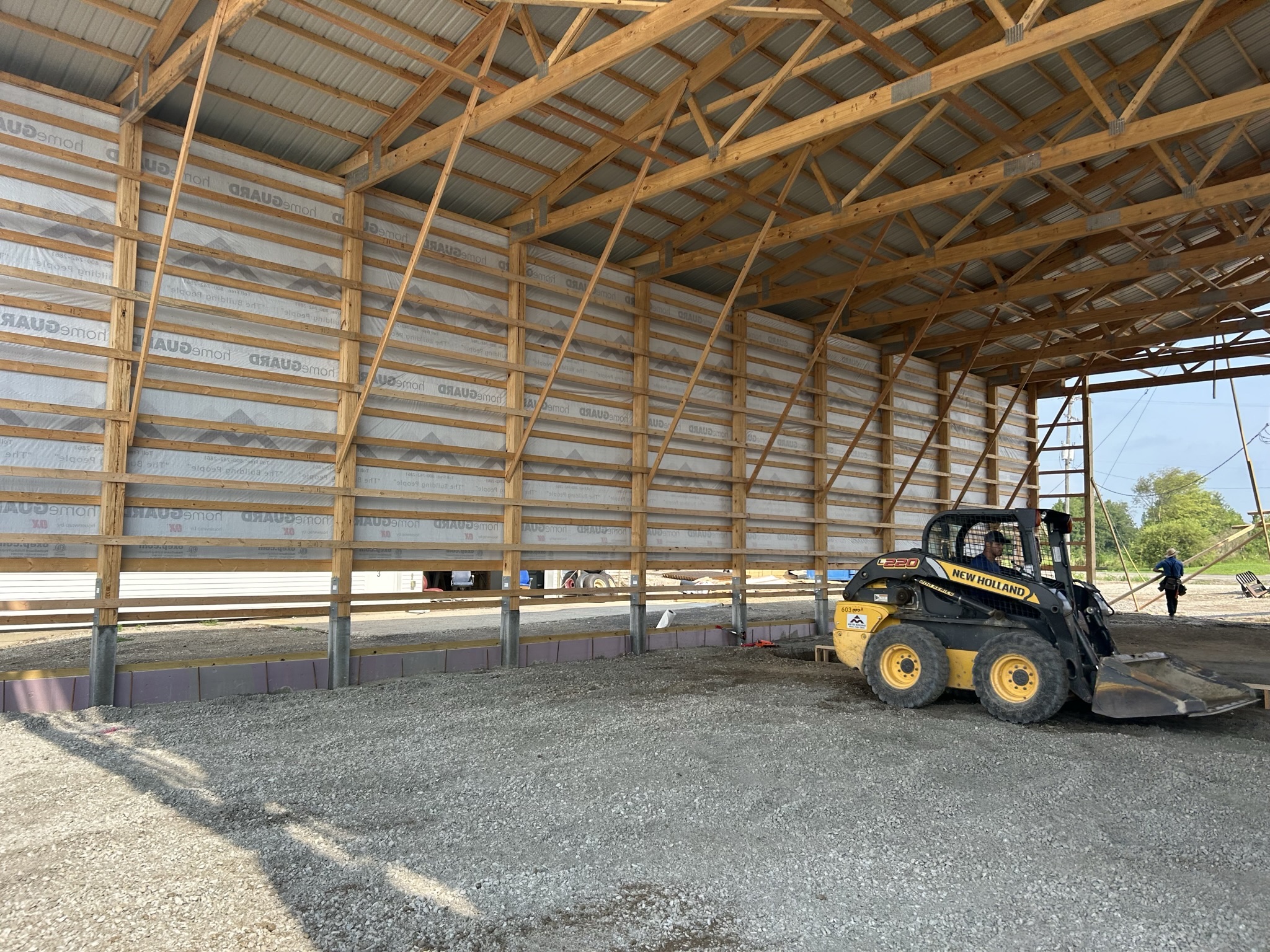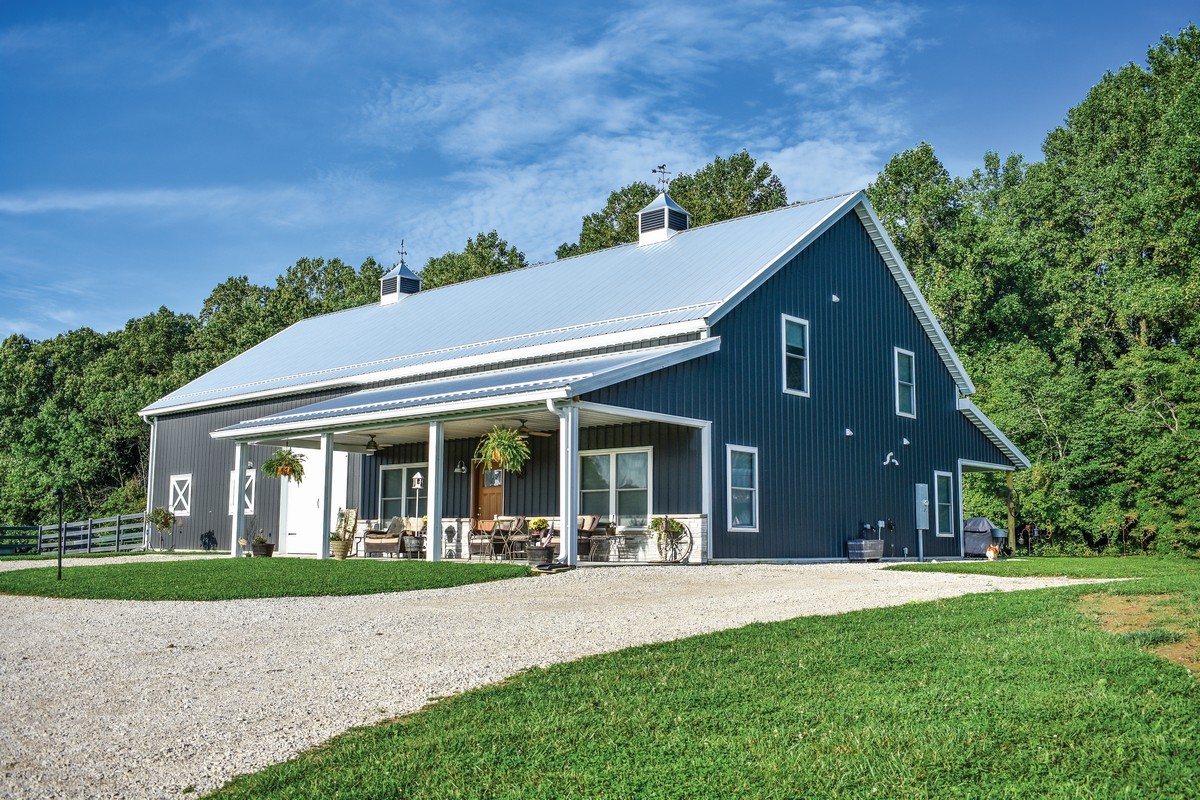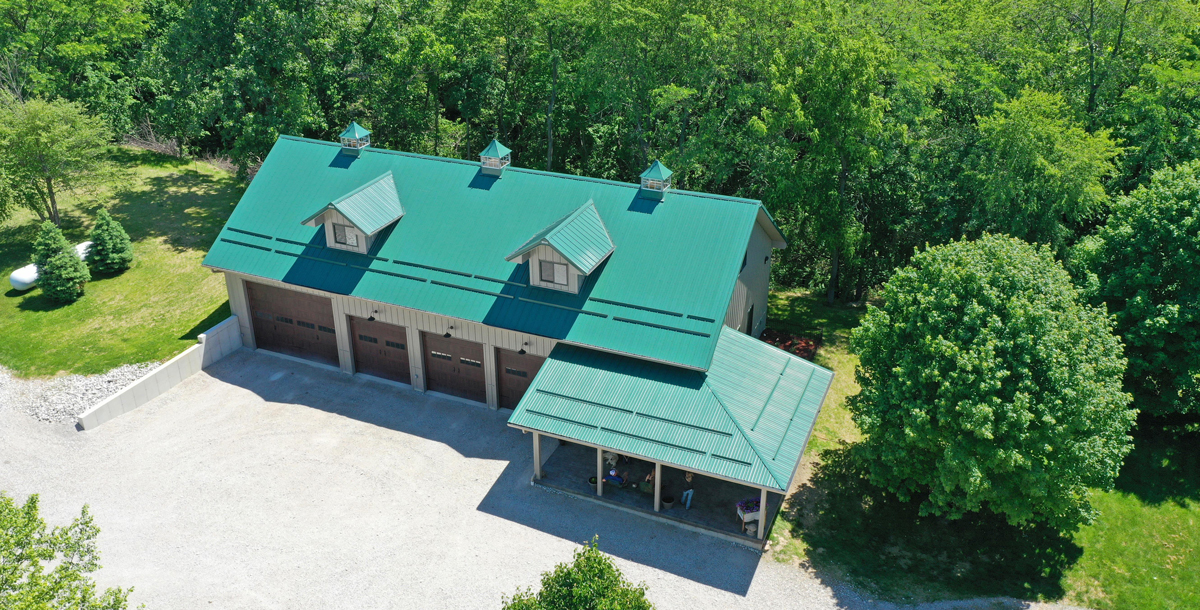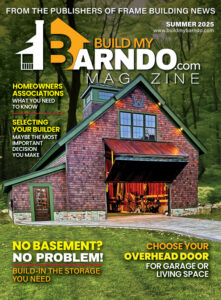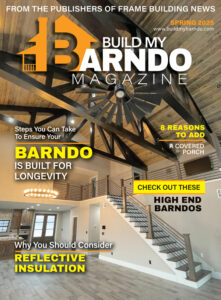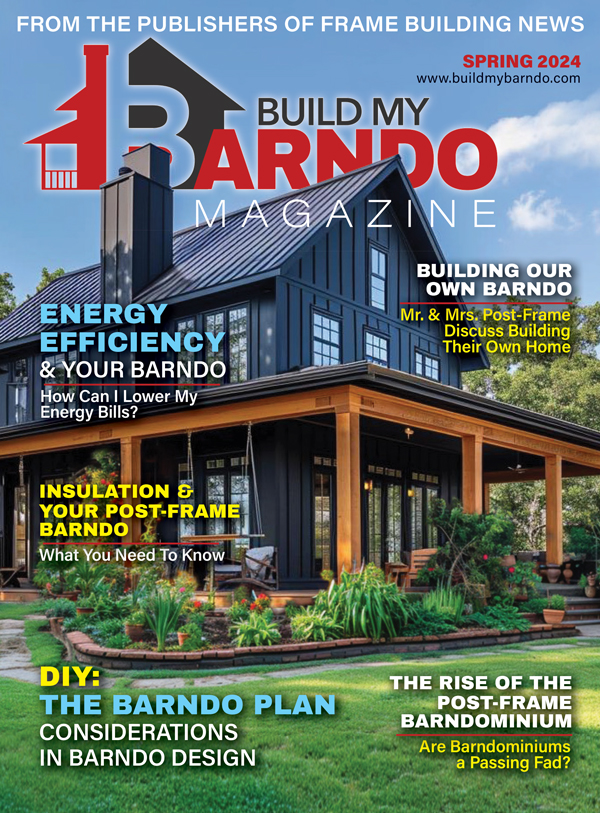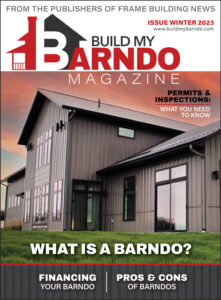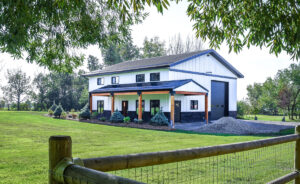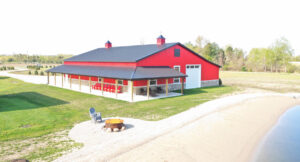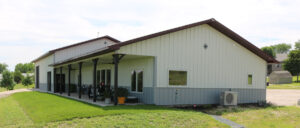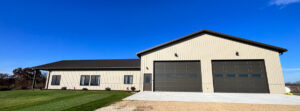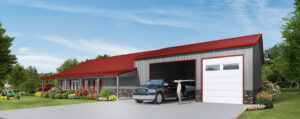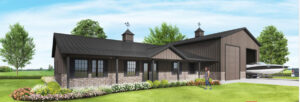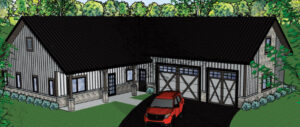By Linda Schmid
Barndominiums can be built with post frames or metal frames. Both framing options are viable; each has its own advantages and neither one is inherently superior. A would-be barndo owner should investigate these options and perhaps talk to an area expert about which is best for your project. (You might also refer to this article). If you decide on a metal-frame barndo, then the following discussion is not relevant to your build. If, however, you are considering a post-frame building, here are some basics about the posts in your barndo’s frame.
What Are the Posts in Post-Frame Construction?
Post-frame barndominiums are built with frames that transfer the weight of the roof and any wind, rain, or snow “loads” to the posts at the sides and corners of the building. Naturally that makes your posts a very integral part of the barndo; they are necessarily exceedingly strong.
The wood could be any strong wood, but commonly it is Southern Yellow Pine, as is used in much construction. People have been building structures from wood in America for hundreds of years, and the wood stood up pretty well in all kinds of situations, wet or dry. Of course wood used for construction has been pressure treated since the 1940s to protect it from rot, and it is currently required for wood placed in the ground in the International Building Code.
Pressure Treating is Not Enough
While some older generations may talk about how they helped build their parents’ shed and they inserted posts in the ground and they lasted forever, there is something that today’s home builders should know. Wood is not the same as it was. Old growth trees that had years and years to mature were, in general, very dense. They had very compact rings compared to the trees being grown today. That is to say that today’s trees are not as dense as they were, therefore, the wood is not as dense either. Density affects wood’s vulnerability.
What is wood vulnerable to? Mainly insects, micro-organisms that cause rot, and fire. Insects and micro-organisms are deterred by pressure treatments because they are basically toxins that have been used to poison these creatures’ food source: the wood. If the application of these chemicals is well-done, these pests will be unsuccessful in attacking the wood.
Over time, the chemicals will leach from the wood leaving the wood unprotected. The amount of time this takes is highly variable; it could be sixty years, or it could be ten years. Further, buying all your posts from the same place at the same time is not an assurance that the posts will last the same amount of time, even posts treated the same way can end up more or less vulnerable to the leaching process. While it is possible to remedy rotted poles years after the build, it is not an ideal situation. When it comes to your home’s foundation better protection is called for; you don’t want to be digging down to check on the posts that hold up your home.
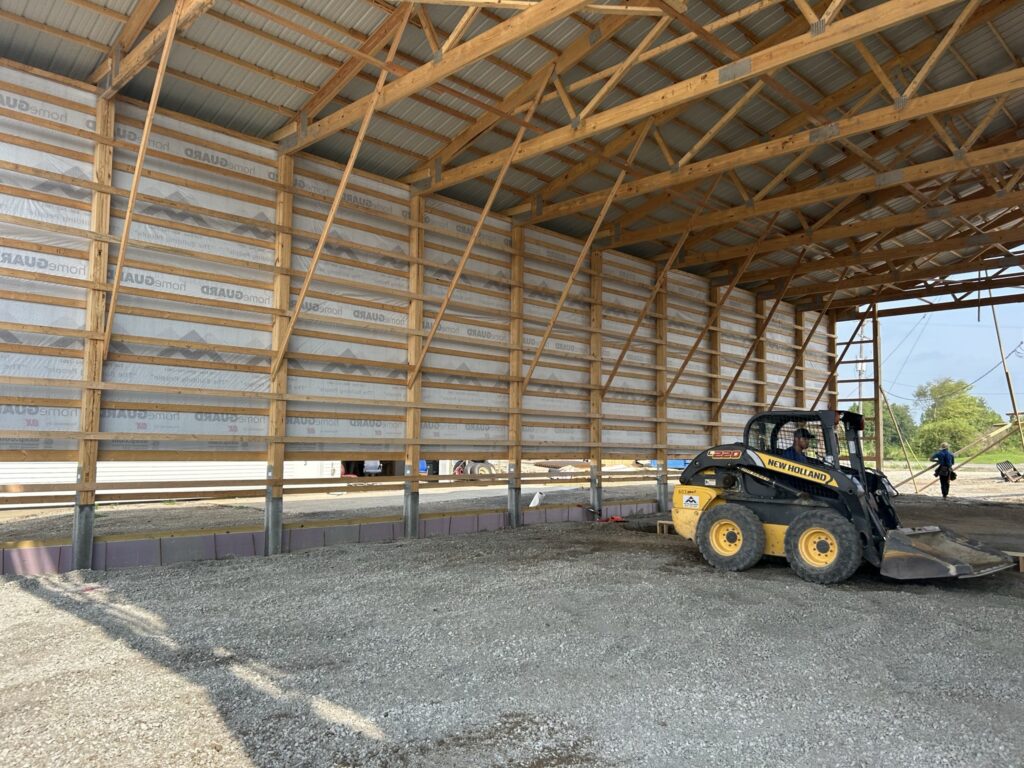
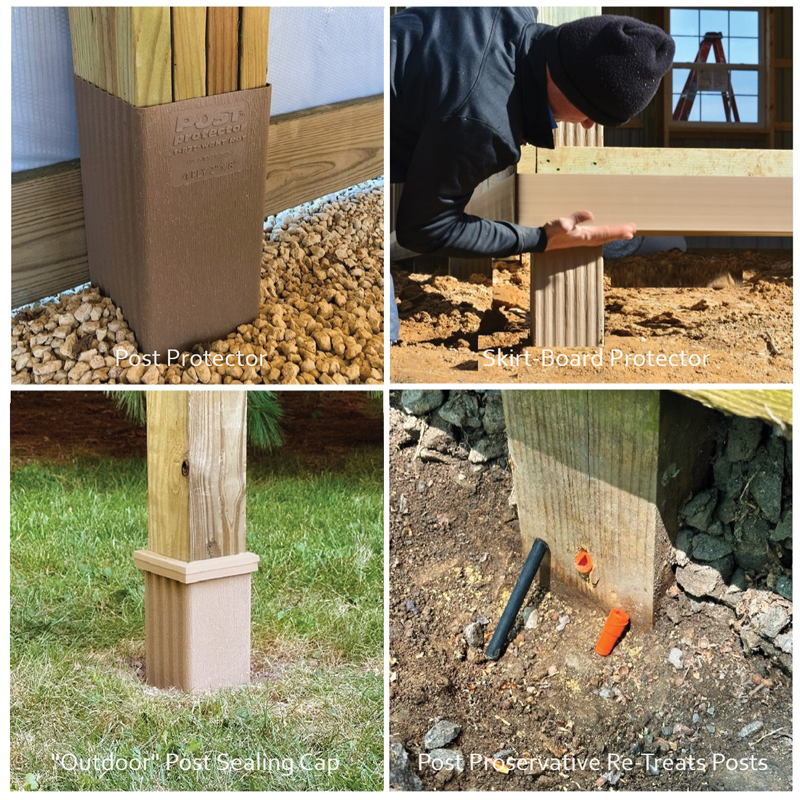

Post Protection Options
Post protection comes in several forms, from avoiding wood below ground altogether to finding various ways of adding a layer between pressure treated posts and the earth.Here are a few of those solutions, though there are probably more.
• Plastic pieces the builder fastens to the pole
• Wooden Poles fitted with a plastic covering for in-ground insertion
This can be a plastic covering that is baked on to the post sealing preservatives in and other elements out.
• A non-wood or concrete post with embedded steel bracket support that goes in the ground and extends upward, attaching to the wood post above the ground.
The post protection option you or your builder choose should have a long warranty. These products generally have very long expectations of effectiveness, anywhere from a lifetime to hundreds of years.
It is optimal to consider uplift prevention for posts so that they do not move due to winds, high water tables, or even seismic activity. Uplift protection may be included with the post protection option you choose. If it is not, then there are uplift components you can add for this protection.
There are many brands of post protection, and they will have varying lifetime expectancies. The important thing is to speak to a post-frame professional to make that decision, and/or do some research to verify that the product you choose is verified as a good choice by industry professionals. Also be sure that you have adequate uplift protection.
Industry Expert Contributors
Barry Hoffman, Green Post , www.planetsaverind.com/
Ken McDonnell, Post Protector, www.postprotector.com/
David Gruhlke, Plasti-Sleeve www.plastisleeve.com/
Mark Stover, Perma-Column www.permacolumn.com/

